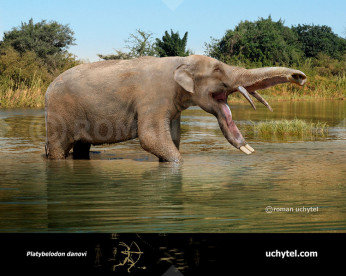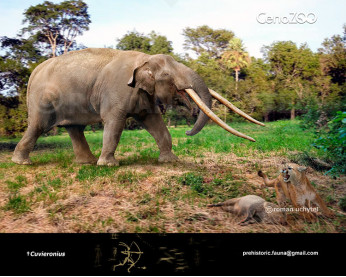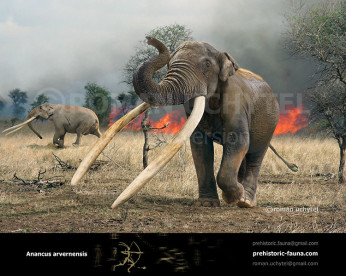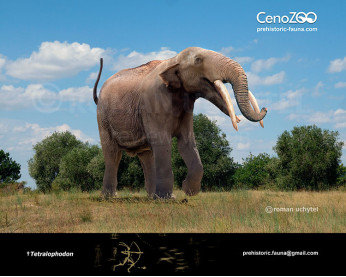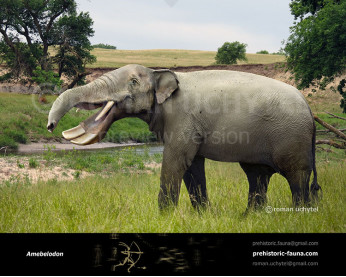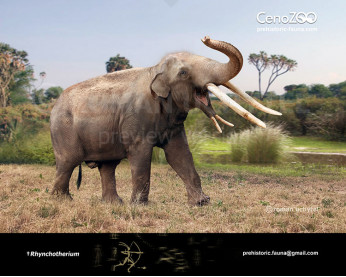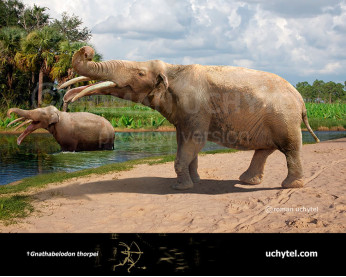Gomphotherium
181181Gomphotherium (Gomphotherium Burmeister, 1837)
Synonyms: Trilophodon, Tetrabelodon, Serridentinus, Tatabelodon
Order: Proboscidea
Family: †Gomphotheriidae
Dimensions: length - 5 m, height - 2,5 - 3 m, weight - 3000 - 4000 kg
Temporal range: Early Miocene until the genus' extinction during the Middle Pliocene (North America, Eurasia and Africa)
A typical representative: Gomphotherium angustidens Burmeister, 1837
Gomphotherium is an extinct genus of proboscid which evolved in the Early Miocene of North America, living about 10 million years ago.
The genus emigrated into Asia, Europe and Africa after a drop in sea level (probably during the Tortonian epoch) allowed them to cross over. It survived into the Pliocene.
Gomphotherium stood around 3 metres high with an estimated weight of 4-5 tons, and bore a strong resemblance to a modern elephant. However, it had four tusks; two on the upper jaw and two on the elongated lower jaw. The lower tusks are parallel and shaped like a shovel and were probably used for digging up food from mud. Unlike modern elephants, the upper tusks were covered by a layer of enamel. Compared to elephants, the skull was more elongated and low, indicating that the animal had a short trunk, rather like a tapir's. These animals probably lived in swamps or near lakes, using their tusks to dig or scrape up aquatic vegetation. In comparison to earlier proboscids, Gomphotherium had far fewer molars; the remaining ones had high ridges to expand their grinding surface. Gomphotherium inhabited dry wooded regions near lakes.
Gomphotherium (Gomphotherium Burmeister, 1837)
Synonyms: Trilophodon, Tetrabelodon, Serridentinus, Tatabelodon
Order: Proboscidea
Family: †Gomphotheriidae
Dimensions: length - 5 m, height - 2,5 - 3 m, weight - 3000 - 4000 kg
Temporal range: Early Miocene until the genus' extinction during the Middle Pliocene (North America, Eurasia and Africa)
A typical representative: Gomphotherium angustidens Burmeister, 1837
Gomphotherium is an extinct genus of proboscid which evolved in the Early Miocene of North America, living about 10 million years ago.
The genus emigrated into Asia, Europe and Africa after a drop in sea level (probably during the Tortonian epoch) allowed them to cross over. It survived into the Pliocene.
Gomphotherium stood around 3 metres high with an estimated weight of 4-5 tons, and bore a strong resemblance to a modern elephant. However, it had four tusks; two on the upper jaw and two on the elongated lower jaw. The lower tusks are parallel and shaped like a shovel and were probably used for digging up food from mud. Unlike modern elephants, the upper tusks were covered by a layer of enamel. Compared to elephants, the skull was more elongated and low, indicating that the animal had a short trunk, rather like a tapir's. These animals probably lived in swamps or near lakes, using their tusks to dig or scrape up aquatic vegetation. In comparison to earlier proboscids, Gomphotherium had far fewer molars; the remaining ones had high ridges to expand their grinding surface. Gomphotherium inhabited dry wooded regions near lakes.

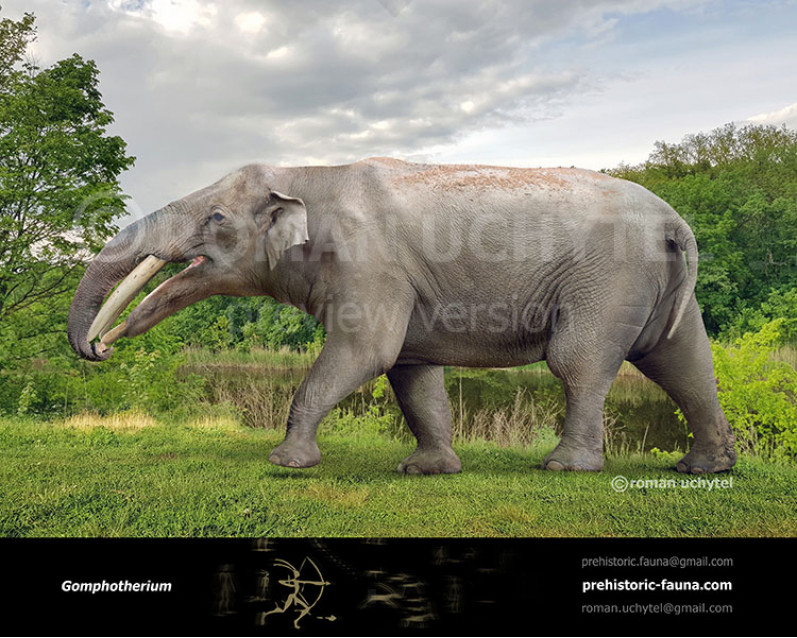
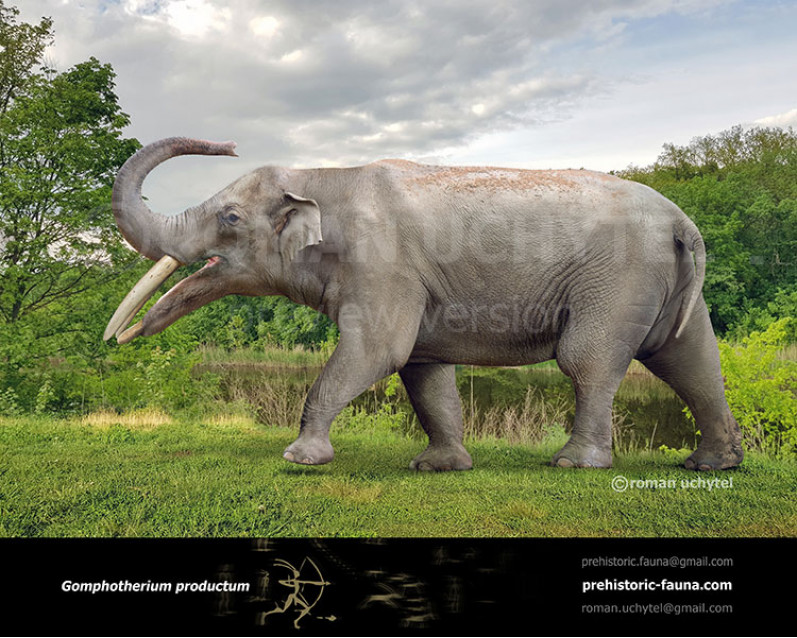
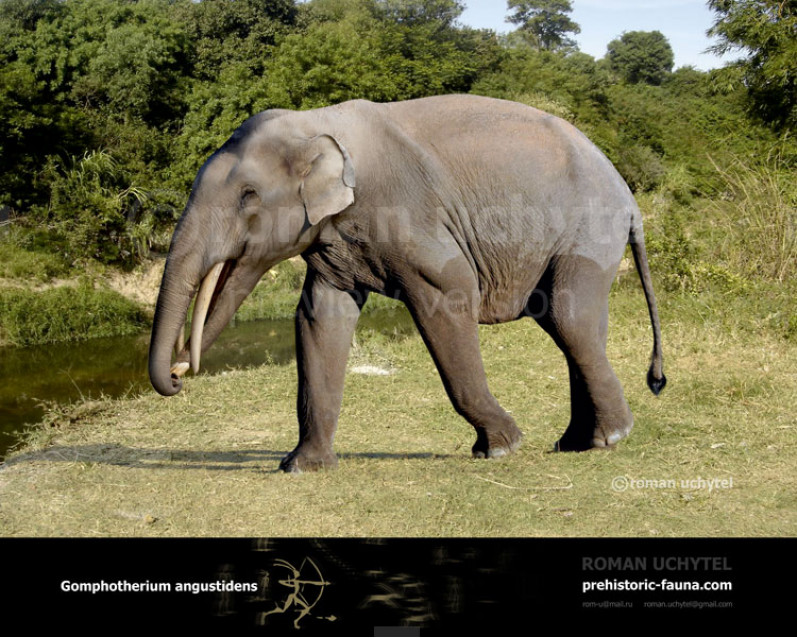
1-797x638.jpg)
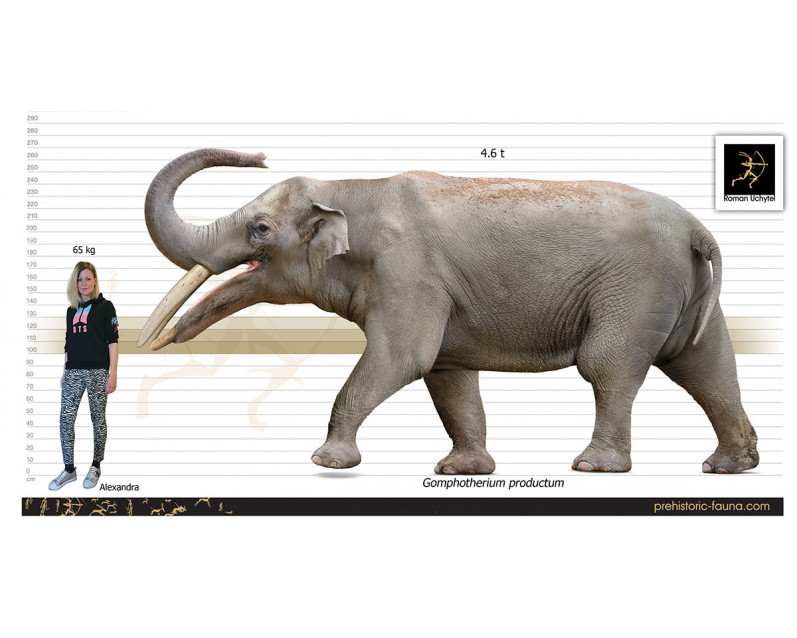



1-70x56.jpg)

